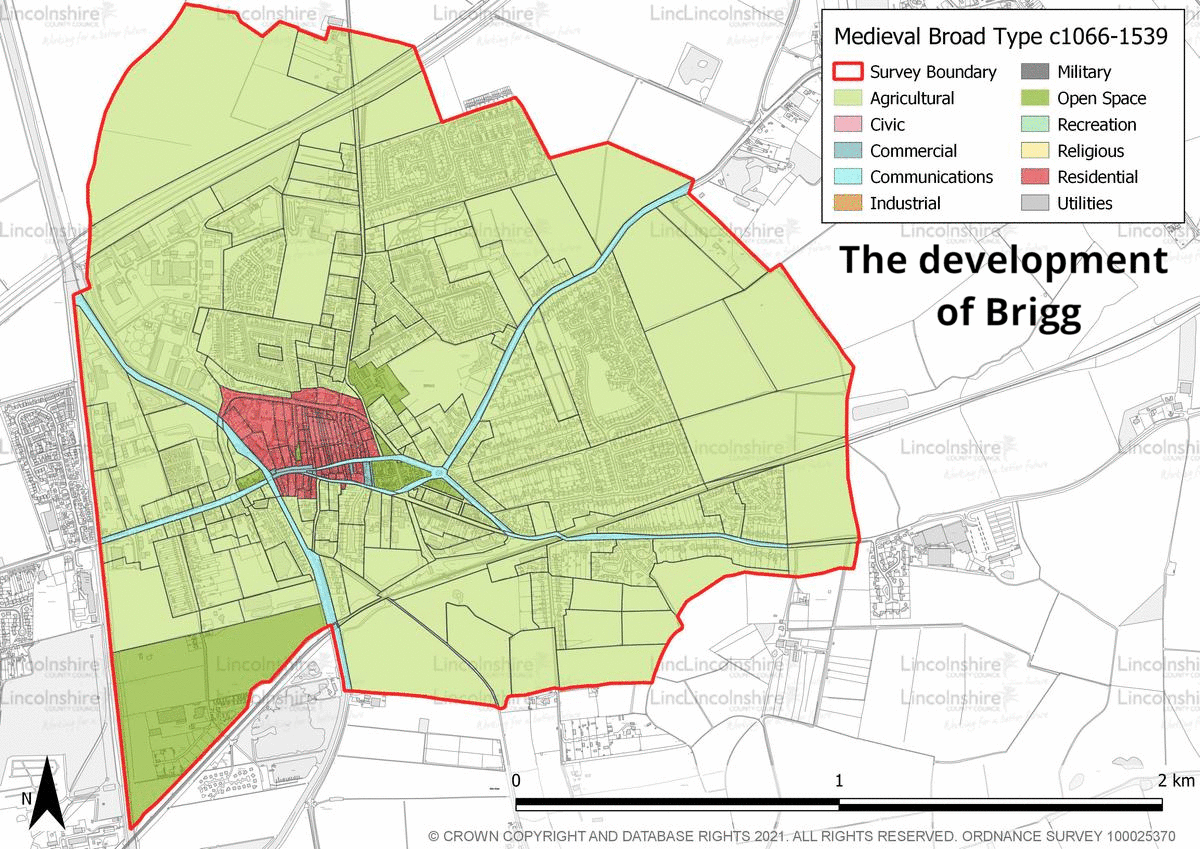BRIGG
The quintessential market town of Brigg is located on the eastern slope of the Old River Ancholme, in North Lincolnshire. Its favourable position has provided impetus for activity since the prehistoric period. Evidence of domestic remains and enclosures determine that the area was settled from an early period. Scattered finds including axes, coupled with the prehistoric track-way, boats and possible evidence of a boat production site elucidate our understanding of how local populations managed and navigated their environment, at a time of rising water levels. A lack of archaeological remains from the Roman period suggests that settlement did not continue into this period, although scattered find-spots, settlement remains in the surrounding villages, and a major Roman road to the west of the town confirms Roman activity in the wider area.


Remains from the early medieval period are also very limited, although it is understood that several of the surrounding towns and villages were settled at this time. Brigg was not founded as a settlement until the 12th century, confirmed by its absence in the Domesday Survey of 1066, and the Lindsey Survey of 1125. The town grew rapidly and Brigg was granted a market and fair by 1203, which would have been held on the bridge (which was also constructed at this time), and in the market place. The medieval layout has been well preserved and is recognisable today. Documentary evidence also suggests that the town had a hospital in this period, it is thought that these would have been located close to the bridge, this is not however, known for certain. In this period, much of the surrounding land was owned by other parishes, and comprised open fields (evidence for this is seen in the ridge and furrow to the south of the town), woodland, meadow, and common grazing/pasture.
The 19th century saw the expansion of development into green-fields of the town with many new streets established to the west, south, and east of the centre. These developments were built to accommodate a population which grew throughout the century and are more spacious than the tightly packed ad-hoc market centre. The 20th century has seen large changes to the town including the development of numerous large new residential estates to the north, east, and south; development is confined to the west by the Ancholme Rivers and adjacent parishes. To the north of the town centre, the construction of a new road, supermarkets and car parks have altered some of the former medieval layout. However, pedestrian access to the town has also been improved by these developments and of the construction of a new bridge on the A18, to the north of the town centre, which has directed traffic away from the market place and the town centre. This development has made the centre of the town a pleasant space for both residents and visitors and created a sense of place which can be enjoyed without the interruption of traffic.




Unlike many Lincolnshire towns, Brigg has no remaining buildings from the medieval period, however, the town layout from this period has been preserved within the modern town particularly on Wrawby Street. Investment in the town took place in the 17th century with the construction of the New Ancholme River in the 17th century. This vastly improved the economy of the town, and by the 19th century the town was trading in timber, coal, and agricultural produce. Much redevelopment of the centre took place in the 17th-20th centuries as a consequence of this new investment, and the town character largely reflects Georgian and Victorian architectural styles as a result. Until the 19th century, this development was largely redevelopment in old plots. This created long, ad-hoc building lines within the town centre: extending from the main thoroughfares, which are still visible today. Brick dominates the material palette throughout Brigg, timber windows and pantile roofs are frequent in the centre, reflecting the accessibility of these local building materials.
